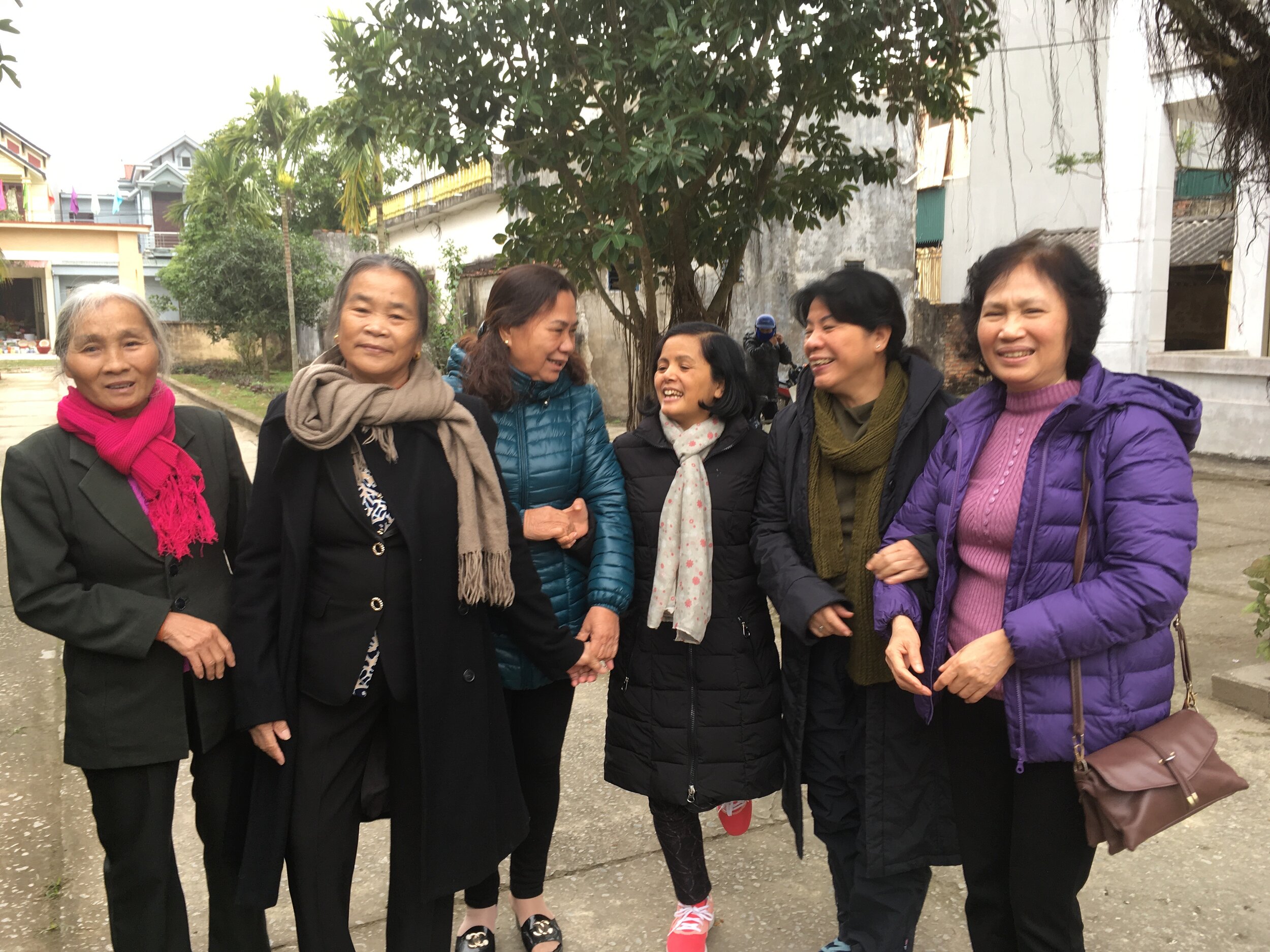Listen to Vietnamese locals speak about the impacts of the Positive Deviance Initiative from the 1990s on their communities and families 25 years later.
Monique Sternin’s Return to Thanh Hoa, Summer 2019
Nearly a year ago I went back to Viet Nam and Thanh Hoa province to meet with old colleagues and Women's Union members who had made the Nutrition rehabilitation program with the use of the Positive Deviance approach a historical success some 30 years ago. I wanted to find out if anything of that program had a lasting impact ....So 4 old colleagues from Save the Children and I piled into a brand new SUV and sped away to Thanh Hoa Quang Xuong district.
Three Save the Children colleagues (left) met with some Women’s Union members in Quang Gua village
The 2 1/2 hour trip was a stark contrast to the gruesome 5 hours we used to take to go to Thanh Hoa in a rented old Russian car… We spent the time talking and recollecting our many trips to the villages, laughing at our inexperience and the many tribulations we encountered on our weekly trip back and forth to the field.
The provincial town was unrecognizable, a big city with huge expends of new housing construction sites... The village was also completely new to me: dwelling of mud walls and palms roofs with no windows replaced by cosy concrete houses with big glass windows, paved roads and cars everywhere!
The only place that looked vaguely familiar was the local health center with Ho Chi Minh’s bust benevolent smile looking down on us in it meeting room.
We were welcomed by a dozen Women's Union members who wasted no time to tell us how they have taught all that they learned in the project to their children and grandchildren. Their pride was visible when they told us how THEY had rehabilitated so many children at a time of great hardship, by discovering some solutions in their own backyard.
They have not forgotten Om Jerry and Ba Monique and have kept a photo of our journey with them on the clinic… Even more touching was the photo one volunteer from another village kept all these years of Jerry and herself which she shared during a visit from one of our old colleague in 2016:
I felt privileged and grateful for the opportunity to meet again with those courageous women who were successful against the odds and for the Save the Children Vietnamese staff whose faith in the PD approach and their people never wavered.
SCF staff in 1996 and some of them reunited in 2019 in Hanoi
Vietnam Pictures from 1991-1999:
Vietnam Pictures from 2000-2019:
For more information, please email Monique Sternin at [email protected].
Background:
In 1991, John and Monique Sternin faced what seemed like an insurmountable challenge in Vietnam. As new Director of Save the Children in Vietnam, Jerry was asked by government officials to create an effective, large-scale program to combat child malnutrition and to show results within six months. More than 65 percent of all children living in Vietnamese villages were malnourished at the time. The Vietnamese government realized that the results achieved by traditional supplemental feeding programs were difficult to maintain after the programs ended. The Sternins were mandated by the government to come up with an approach that would enable the community to improve AND sustain their young children’s health status…and quickly!
Building on Marian Zeitlin’s ideas of positive deviance, working with the four poorest cities in QX District, TH Province and a population of 2,000 children under the age of three, the Sternins invited the SC staff to identify poor families who had managed to avoid malnutrition despite all odds, facing the same challenges and obstacles as their neighbors and without access to any special resources. These families were the positive deviants. They were “positive” because they were doing things right, and “deviants” because they engaged in behaviors that most others did not. The Sternins and the community discovered together that caregivers in the PD families collected tiny shrimps, crabs, and fish from paddy fields, and added those, along with sweet potato greens, boiled rice, and what other food was available, to their children’s meals. These foods were accessible to everyone, but most community members believed they were inappropriate for young children. The PD families were also feeding their children three to four times a day.
The communities developed an activity which enabled all of the families with malnourished children to rehabilitate their children and to learn how to sustain their children at home on their own, by inviting them to practice the demonstrably successful but uncommon behaviors which they had discovered in their communities. The pilot project resulted in the sustained rehabilitation of several hundred malnourished children and the promotion of social change in their communities.














































